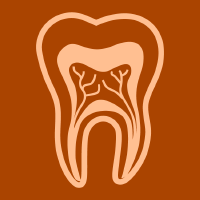Topic Menu
► Topic MenuTopic Editors


Material Science in Endodontics
Topic Information
Dear Colleagues,
Thanks to contemporary endodontic materials, the efficiency and effectiveness of modern clinical endodontics have seen remarkable advances. By using newly introduced endodontic materials, the clinical success rate and postoperative prognosis of primary endodontic treatment and retreatment via nonsurgical or surgical root canal treatments has increased substantially.
In the field of endodontics, lots of brand-new devices and materials, including apex locator integrated motors, ultrasonic devices, heat-treated root canal shaping instruments, bioceramic materials such as MTA (mineral trioxide aggregates), calcium silicate sealers, and intracanal medicaments have been introduced and studied for their properties and effectiveness. Further scientific studies are needed to collate clinically relevant evidence for these contemporary endodontic materials.
It is my pleasure to invite scientists and researchers to submit a manuscript for this Topic on “Material Science in Endodontics”. Full papers of original articles, communications, and review articles are all welcome.
Prof. Dr. Hyeon-Cheol Kim
Dr. Minju Song
Topic Editors
Keywords
- endodontics
- materials
- root canal
- shaping
- cleaning
- obturation
- prognosis
- natural tooth preservation
- minimal invasiveness
Participating Journals
| Journal Name | Impact Factor | CiteScore | Launched Year | First Decision (median) | APC |
|---|---|---|---|---|---|

Applied Sciences
|
2.5 | 5.3 | 2011 | 17.8 Days | CHF 2400 |

Dentistry Journal
|
2.5 | 3.7 | 2013 | 26 Days | CHF 2000 |

Journal of Clinical Medicine
|
3.0 | 5.7 | 2012 | 17.3 Days | CHF 2600 |

Journal of Functional Biomaterials
|
5.0 | 4.6 | 2010 | 15.8 Days | CHF 2700 |

Materials
|
3.1 | 5.8 | 2008 | 15.5 Days | CHF 2600 |

Oral
|
- | - | 2021 | 27.7 Days | CHF 1000 |

MDPI Topics is cooperating with Preprints.org and has built a direct connection between MDPI journals and Preprints.org. Authors are encouraged to enjoy the benefits by posting a preprint at Preprints.org prior to publication:
- Immediately share your ideas ahead of publication and establish your research priority;
- Protect your idea from being stolen with this time-stamped preprint article;
- Enhance the exposure and impact of your research;
- Receive feedback from your peers in advance;
- Have it indexed in Web of Science (Preprint Citation Index), Google Scholar, Crossref, SHARE, PrePubMed, Scilit and Europe PMC.

